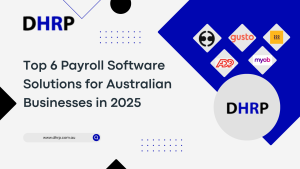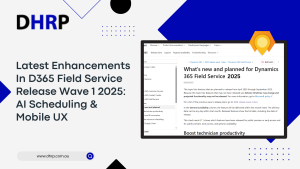According to a recent poll conducted by the Australian Payroll Association (APA), one-third (33%) of organisations make a mistake every pay run, and 21% make the same mistake every quarter.
As a result of these mistakes, employees face a salary delay, which causes further issues. This impacts employee retention and hinders the company’s growth.
It indicates that you need to upgrade your payroll software. Choose a solution with better features that will meet your business needs and ensure efficacy and accuracy.
To ensure you get the right software, let’s discuss the top 12 payroll software features that are must-haves for your payroll.
But First, Why Does Payroll Software Matter for Australian Businesses?
An effective payroll process is one of the most important functions in any company, yet achieving a hassle-free payroll was no easy task for Australian businesses.
As discussed earlier, almost 33% of organisations make mistakes when running payroll. The errors can increase in no time and delay the significant payments. But the right payroll software can solve it all by offering the following benefits:
- Compliance with Fair Work and ATO regulations.
- Efficiency in handling complex wage systems and reporting.
- Enhanced employee satisfaction and operational visibility.
- Aligns with Modern Payroll Solutions Australia.
Top 12 Must-Have Payroll Software Features
Understanding the complexities of tax legislation, ensuring compliance with ever-changing laws, and storing varied employee data can be difficult undertakings. However, the correct payroll software offers the promise of increased efficiency and accuracy.
So, what features should you look for in payroll software Australia?
1. STP Phase 2 Compliance
The Australian Taxation Office (ATO) has implemented Single Touch Payroll (STP) Phase 2, which requires businesses to provide complete payroll information every pay cycle. The appropriate Payroll Software should automate this procedure, handling income categories, termination payments, and tax file numbers while keeping up with the latest ATO rules.
2. Automated Award Interpretation
One of Australia’s most difficult payroll issues is the country’s intricate award system. A modern solution should include built-in award interpretation, which will automate penalty rates, overtime, and allowances based on industry-specific awards or EBAs. This feature helps you avoid underpayment accusations and guarantees that your company remains Fair Work compliant.
3. Integrated Superannuation Management
Your payroll software should support SuperStream, which calculates and processes superannuation automatically. Super precision is needed, especially since the Super Guarantee is projected to increase to 11.5% by July 2024 and 12% by July 2025.
A payroll system that assures regular super payments might help you avoid late fines and increase employee retention.
4. Real-Time Tax Calculation & Reporting
An effective payroll software should handle PAYG withholding, income tax changes, and any related deductions. With the frequent changes to ATO tax levels and refunds, automation guarantees that computations are accurate, especially during EOFY reporting.
5. Employee Self-Service Access
A self-service portal in Dynamics 365 improves transparency and lowers HR bottlenecks by allowing employees to examine pay stubs, request leave, and update their information. This is a game changer for major organisations or those searching for the best payroll software for small businesses in Australia.
6. Leave and Attendance Tracking
Time off and working hours must be properly monitored for payroll and performance management. Integrated systems eliminate manual errors and ensure that sick leave, public holidays, and annual leave are paid correctly and in compliance with policies.
7. Mobile Accessibility
With hybrid and remote work models on the increase, mobile-friendly payroll solutions are no longer an option. Approvals, documents, and notifications must be accessible on the go.
8. Scalability for Growing Teams
Your system should adapt whether you have 5 or 500 employees. Scalability enables changes in payroll legislation across several locations and various jobs. It identifies the best payroll software for organisations as both a short—and long-term investment.
9. Dynamics 365 Payroll Integration
If your company is already in the Microsoft ecosystem, Dynamics 365 Payroll integrates seamlessly with finance, HR, and project management systems. It minimises redundancy, improves reporting, and ensures data consistency across departments.
A Dynamics 365 payroll professional can help you customise your setup to ensure award compliance, local tax connection, and optimised procedures.
10. Secure Document & Record Management
Look for options such as secure data storage, automated backups, and permission-based access. These are critical for processing TFNs, contracts, and payslips in accordance with Australia’s Privacy Act.
11. Employee On & Offboarding (Videos, Policies & Procedures)
Dynamics 365 can help you simplify the employee onboarding and offboarding process. Use videos, policies, and procedures to provide detailed instructions to new hires and guarantee a smooth transition when employees leave the company. Streamline operations, improve compliance, and provide a consistent employee experience.
12. Wages / Salary & Benefits Assignment
Payroll benefits are additional remuneration that supplement the base wage agreed upon throughout the hiring process. Employers determine and process these benefits, ensuring they are tax compliant under Australian and New Zealand rules. In Australia, standard perks include superannuation, salary sacrifice, and car, meals, and mobile phone allowances.
13. Multi-Currency & Global Payroll Support
Businesses with international operations benefit from payroll systems that support multiple currencies, tax jurisdictions, and compliance requirements across countries.
14. Roster & Shift Scheduling
Built-in workforce scheduling tools let you align payroll with shifts, rostering, and cost centre allocations in retail, healthcare, and hospitality industries.
15. Automated Back Payments & Adjustments
Missed increments or classification changes? Automated tools to calculate and process back pay adjustments for promotions, reclassifications, or award changes save time and reduce errors.
16. Payroll Cost Allocation
Assign payroll costs across multiple cost centres, projects, or departments—ideal for businesses that track labour expenses for grants or internal reporting.
17. Audit Trail & Change Logs
Maintaining full traceability of payroll edits, approvals, and administrator changes is critical for internal audits and ATO compliance.
18. Compliance Dashboards & Alerts
Visual dashboards notify HR and finance of upcoming tax rule changes, late payments, missing employee documents, or policy breaches.
19. Flexible Pay Frequencies & Multiple Pay Runs
Run weekly, fortnightly, monthly, or off-cycle payrolls concurrently, with the flexibility to accommodate different employee types and contract conditions.
How to Choose Payroll Software for Australian Businesses?
We get it, you have too many options in the market, but you need to choose the best payroll software for businesses that fits just right. And remember, not all payroll tools are equal. Here’s how you can find the proper fit of the best payroll software for small businesses in Australia for your business:
- Confirm Payroll Solutions Australia comply with Fair Work, ATO, and SuperStream standards.
- Consider Dynamics 365 Payroll compatibility for Microsoft-based operations.
- Request scalable features and mobile access.
- Check if a Payroll implementation specialist can help with onboarding.
- Request a demo and work with a Dynamics 365 payroll professional for customisation.
Conclusion
Choosing the right payroll software is crucial to maintaining compliance, accuracy, and employee satisfaction. With payroll software features like STP Phase 2 compliance, automated award interpretation, and mobile access, the best payroll software for Australian businesses simplifies complex payroll processes.
At DHRP, our team of experts delivers comprehensive HR and payroll solutions tailored to Australian standards. As a Dynamics 365 payroll consultant, we help businesses streamline operations, ensure compliance with Fair Work and ATO regulations, and scale effortlessly. Partner with DHRP to implement a system that grows with you—because seamless payroll is just the beginning of smarter workforce management.
FAQs
Key features include STP Phase 2 compliance, automated award interpretation, integrated superannuation management, real-time tax calculations, mobile accessibility, and secure document handling. These features help ensure compliance, reduce errors, and improve payroll efficiency.
STP Phase 2 is a mandatory requirement by the ATO that demands more detailed employee and payment information each pay cycle. Payroll software with built-in STP Phase 2 automation ensures you’re meeting these requirements without manual intervention, reducing the risk of penalties.
Yes, many modern payroll solutions, including those offered by DHRP, can seamlessly integrate with Dynamics 365. This ensures consistency across HR, finance, and project management, offering real-time insights and streamlined operations.




































































































